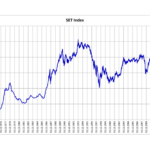Why America’s defense production lags behind China’s
- U.S. struggles to ramp up defense production
- China’s industrial base churns out more weapons
- Simulated war between U.S. and China over Taiwan ends with Taiwan still free, but at a cost
- U.S. loses two aircraft carriers and up to 20 destroyers and cruisers
- China can replace lost ships more quickly than the U.S.
- China’s navy has grown by 17 cruisers and destroyers in the past two years
- U.S. would take six years to build the same number of ships under current conditions
The U.S. is facing a significant challenge in building a stronger military. While China’s industrial base churns out more weapons, America struggles to ramp up defense production. A simulated war between the U.S. and China over Taiwan ended with Taiwan still free, but at a grievous cost for the U.S. Two aircraft carriers and up to 20 destroyers and cruisers were lost, while China saw over 50 major surface warships sunk. However, the apparent draw becomes a Chinese victory in the long run. China can replace lost ships far more quickly than the U.S. In the past two years alone, China’s navy has grown by 17 cruisers and destroyers. Under current conditions, it would take the U.S. six years to build the same number of ships. This disparity highlights the need for the U.S. to address its defense production capabilities in order to maintain a strong military presence.
Public Companies:
Private Companies:
Key People: Eric Labs (navy analyst for the Congressional Budget Office)
Factuality Level: 7
Justification: The article provides specific information about the number of ships lost in a simulated war between the U.S. and China over Taiwan. It also includes a quote from a navy analyst for the Congressional Budget Office. However, the article lacks additional sources or evidence to support the claims made.
Noise Level: 7
Justification: The article provides some analysis of the military capabilities of the U.S. and China, but it lacks evidence, data, or examples to support its claims. It also does not provide any actionable insights or solutions. The article stays on topic but does not explore the consequences of decisions or hold powerful people accountable. Overall, the article contains some relevant information but lacks scientific rigor and intellectual honesty.
Financial Relevance: No
Financial Markets Impacted: No
Presence of Extreme Event: No
Nature of Extreme Event: No
Impact Rating of the Extreme Event: No
Justification: The article does not pertain to financial topics and does not describe any extreme event.
 www.wsj.com
www.wsj.com 





